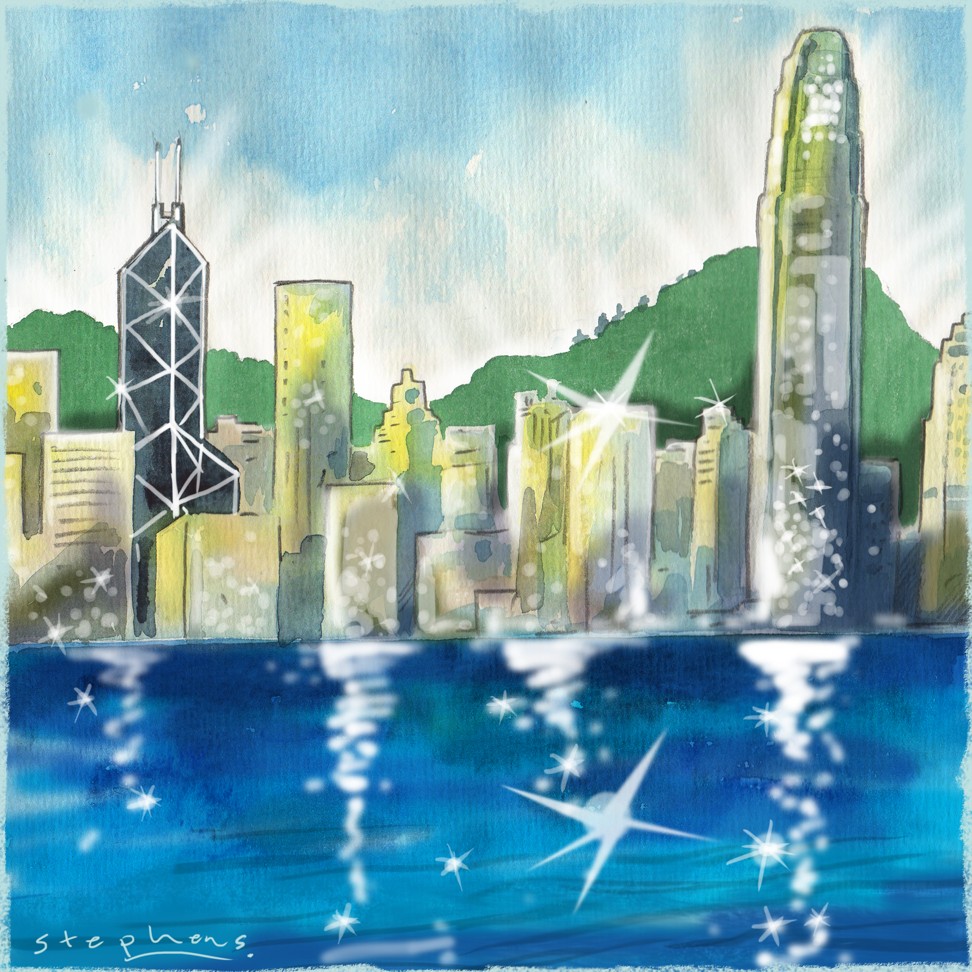
Innovation and vision can make Hong Kong shine in the pan-Pearl River Delta
Bruce McKern says Hong Kong can play to its strengths, and overcome its shortcomings, by creating an innovative ecosystem to steal the march on rising rivals in the Pearl River Delta


China faces challenges on multiple fronts, including an ageing population and shrinking workforce, slowing growth, a shift towards domestic consumption (including services), environmental and health concerns, internal inequality, and growing global protectionism externally.
China’s solution to these interrelated problems is in two directions: first, greater productivity, which implies increased emphasis on innovation, coupled with regional integration; and, second, deeper foreign engagement.
Innovation has been a key element of each of China’s five-year plans for many years, and has been a powerful source of productivity growth. It has been even more strongly emphasised recently, with related initiatives such as the “Made in China 2025”plan. And it was reiterated by President Xi Jinping at the World Economic Forum in January, when he noted that, “China should develop a dynamic, innovation-driven growth model.”
Regional agglomerations, such as the Jing-jin-ji initiative for the Beijing-Tianjin-Hebei region, and the pan-Pearl River Delta or Greater Bay Area proposal, are intended to strengthen productivity by creating industry clusters and innovation regions, which in China and other countries have contributed to higher productivity and income.
Areas such as Silicon Valley in California have much higher per capita incomes and shares of national GDP than regions that lack an innovation ecosystem. In China, clusters such as special export zones and industrial parks contribute over 20 per cent of the national GDP, 60 per cent of exports and a disproportionate share of jobs.
The second element of China’s solution – greater foreign engagement – is developing in two directions: the first is the shifting of Chinese outward foreign direct investment towards the markets of the developed world, and away from the earlier emphasis on acquiring natural resources and petroleum in less industrialised countries. This has become possible as a result of the world-class innovation capabilities that Chinese firms have developed over the years.
The second direction is the belt and road strategy, which seeks market outlets, infrastructure investment, supply lines and geopolitical influence among the nations of Central Asia, as well as closer connection to the markets of Europe.
What are the implications of these initiatives for Hong Kong?
Hong Kong faces different challenges from mainland China. These include high labour costs relative to the mainland and the consequent loss of local manufacturing; a lack of industrial clusters or a research and development ecosystem; logistics and shipping competition from other coastal cities, including Shenzhen and Guangzhou in the Greater Bay Area; high real-estate costs and difficulty in attracting young people into risky entrepreneurial ventures; and a culture which, while attractive in many aspects, has reinforced risk aversion towards innovative new ventures.
Hong Kong now has the opportunity to participate in the greater agglomeration of the Pearl River Delta region, and I believe that it will be able to benefit.
There are several obstacles, but Hong Kong also has a number of specific advantages. The first obstacle is the lack of an innovation ecosystem and experience, which would require a number of conditions to grow successfully, but could be developed with bold policy steps.
These include establishing a research-based innovation precinct, with incubators and an attractive environment for young entrepreneurs. Government funding will be critical to get significant activity off the ground, and some funding has already been allocated, through the creation of an Innovation and Technology Bureau.
A specific precinct could possibly be established in the Lok Ma Chau Loop, close to the border with Shenzhen. Proximity to the markets of the mainland and the established innovation activities of that region would be a valuable stimulus.
The second obstacle is cultural and difficult to overcome, but there is already a thriving entrepreneurialism in financial technology innovation in Hong Kong and this could extend to other fields.

The third relates to language: Hong Kong has lost its leadership as a cosmopolitan city with an educated population at home in Putonghua and English, and able to work effectively with both mainlanders and foreigners. It would be possible to remedy this situation over time with a bold educational initiative, as Singapore has done.
On the positive side, Hong Kong’s traditional strengths can continue to be an advantage. Its financial expertise is strong and its markets are more sophisticated than those of the mainland. It has a transparent and effective legal system in which foreign investors have confidence. It has experience in international trade and logistics, and can be a trusted adviser for foreign firms seeking to invest in the mainland or in the belt and road.
Chief Executive Carrie Lam on Hong Kong’s role in the Belt and Road
A rough analysis of the investment required for the belt and road over the next 10 years – coupled with the investments required to complete the Greater Bay Area and Jing-jin-ji urban mega region (not to mention the 16 other areas where agglomeration has been proposed) and the many other demands on the national budget – suggests that capital of US$700 billion or more per year would be required.
China will have great difficulty in finding this capital alone. There will be a need for foreign capital and expertise to complete the belt and road projects, and Hong Kong could be a valuable intermediary in providing the expertise needed.

A number of foreign companies are already selling equipment and services along the new Silk Road and Hong Kong’s experience in working with foreign firms would continue to provide an advantage.
Further, Hong Kong has other vital assets for an innovation cluster.
Its openness to information, its business-friendly incentives and tax regime, high-quality universities, sophisticated living environment, and receptiveness to foreigners are of great importance to entrepreneurial start-ups and established foreign firms alike, where it can be a trusted adviser and regional operations host.
If it establishes an entrepreneurial innovative ecosystem, it could possibly attract foreign multinationals’ regional R&D centres away from the mainland.
Creating an innovation ecosystem can’t be done overnight, as it requires the coming together of a host of related and necessary elements. But with vision and determination, Hong Kong could become a vital participant in an emerging Greater Bay Area megalopolis.
Professor Bruce McKern is an adjunct professor at the University of Technology Sydney and an adviser to the Maritime Silk Road Society of Hong Kong. This is a summary of his speech at a conference of the Maritime Silk Road Society in Hong Kong on September 14